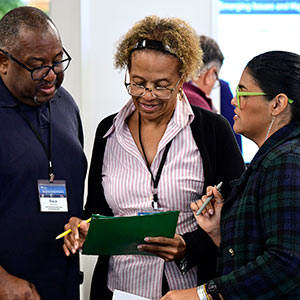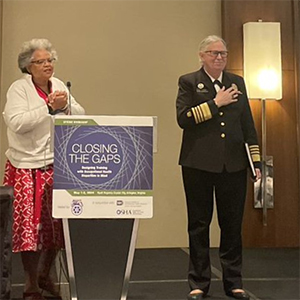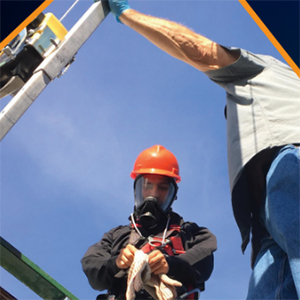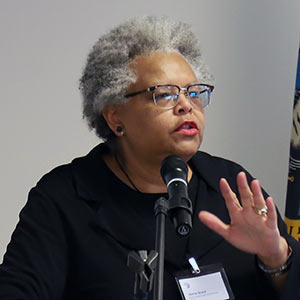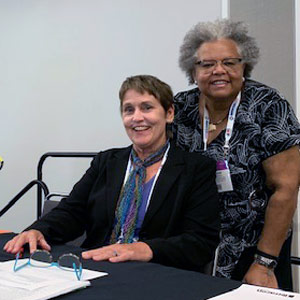The National Advisory Environmental Health Sciences Council convened Sept. 10-11 in Durham, North Carolina, to discuss NIEHS research priorities and consider new initiatives.
One agenda item seemed to strike a chord with all attendees.
With 130 Americans dying every day from opioid overdoses, according to the Centers for Disease Control and Prevention, the epidemic of opioid addiction has become a major public health crisis in the United States.
Opioids in the workplace have been gaining attention because workplace injuries sometimes lead workers to develop dependency on the drugs originally prescribed to treat their pain.
Worker Training Program response
The NIEHS Worker Training Program (WTP) is developing tools for prevention and intervention to help reverse the tide of opioid misuse, addiction, and death among workers.
At the council meeting, WTP director Joseph “Chip” Hughes introduced a man on the front lines of efforts to prevent and treat workplace opioid abuse — Steve Romero, a health and safety representative for the United Auto Workers (UAW).
Romero spoke movingly about the tragic 2018 opioid-related death of his beloved 48-year-old brother Jeffrey.
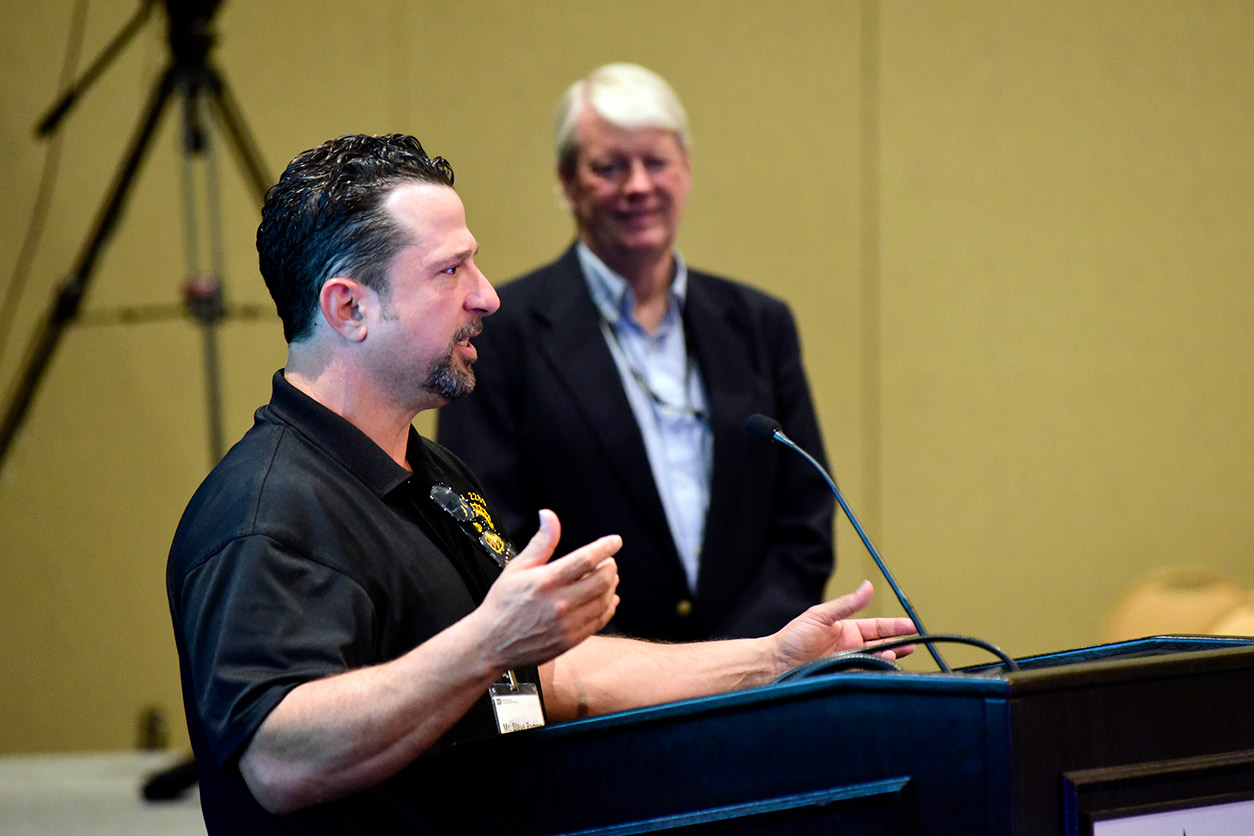 Romero, left, works with Hughes to develop and distribute tools to help curb opioid misuse and addiction. (Photo courtesy of Steve McCaw)
Romero, left, works with Hughes to develop and distribute tools to help curb opioid misuse and addiction. (Photo courtesy of Steve McCaw)Hope in the face of grief
“My brother became dependent on opioids after years of damage his body suffered from playing sports and working on the shop floor…. At the peak of his dependency, Jeff was taking 20-30 OxyContins a day, over 10 times the prescribed daily dose,” he said.
“I found my brother dead in his bed at the young age of 48. As you might imagine, my family was devastated.”
Yet Romero brought a message of hope and resilience.
“It’s time to treat those affected by this epidemic in the same way we treat other epidemics the world is facing — with compassion, education, treatment accessibility, and financial resources.”
Rethinking judgment
Romero said that he used to think using opioids was a choice, but the death of his brother and a WTP opioid dependency awareness training changed his thinking.
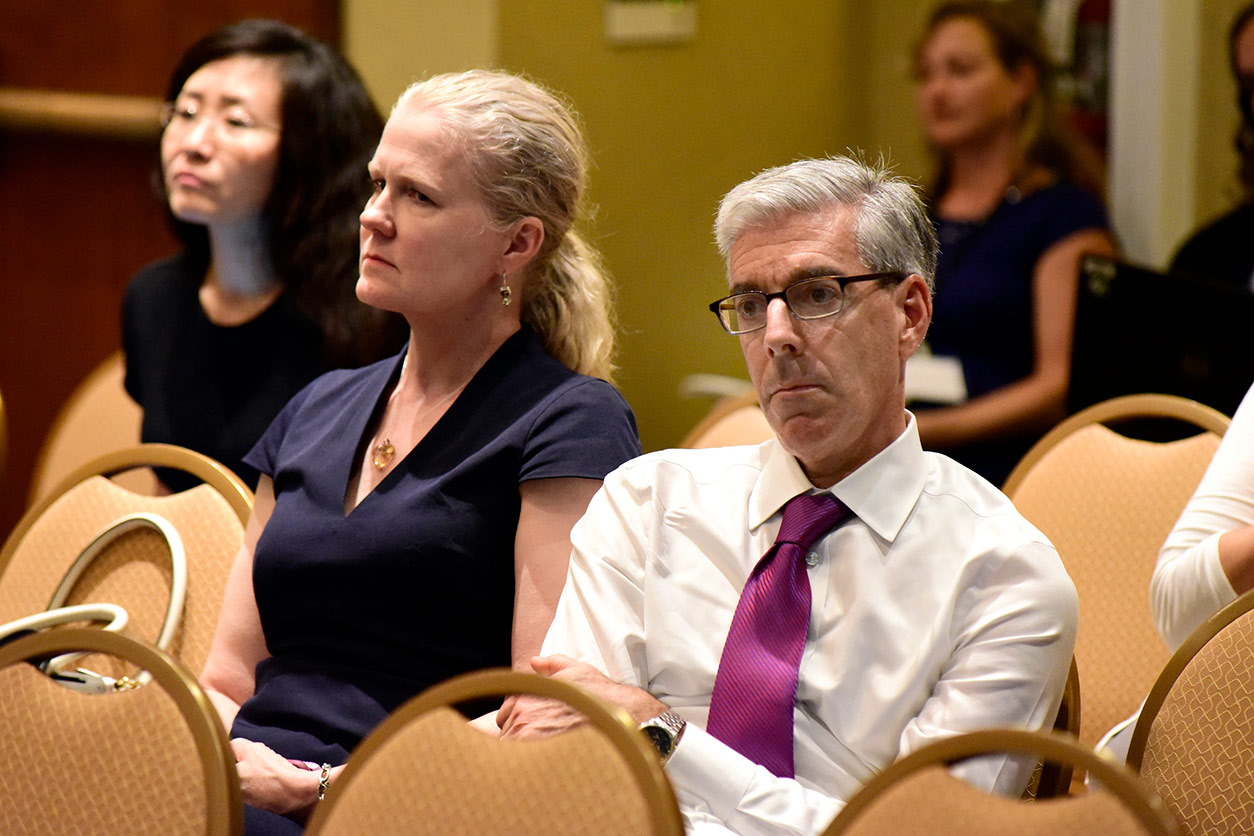 Romero’s story captured the audience’s attention. (Photo courtesy of Steve McCaw)
Romero’s story captured the audience’s attention. (Photo courtesy of Steve McCaw)“Instead of disappointment, anger, and blame as the lead characters in my life’s movie,” Romero said, “they were replaced by compassion, understanding, and removal of stigma in a starring role.”
Gary Ellison, Ph.D., the National Cancer Institute liaison to the council, spoke for many in the room. “Thank you for sharing your story,” he said. “I hope you find it empowering to turn such a tragic loss into something positive, where you can help others.”
Joining forces
Today, Romero spends his time working with the WTP team on interventions to prevent and treat opioid problems in UAW-affiliated factories.
For example, he attended a WTP workshop held May 15-16 in Pittsburgh, Pennsylvania, focused on reducing workplace stress and addiction.
Leaders from several WTP grantee organizations, such as Steelworkers Charitable and Educational Organization (SCEO) and International Association of Fire Fighters, discussed the unique challenges these workers face.
Topics ranged from prevention and intervention strategies to removing stigma associated with mental health and addiction.
“As a program, we can change the narrative,” said Ashlee Fitch, lead researcher for SCEO, at the workshop. “We know what the headlines say now, but what should they say in the future?”
(Ernie Hood is a contract writer for the NIEHS Office of Communications and Public Liaison.)





